Leading up to the Tokyo Olympics, the FIG republished its Code of Points. You can download the entire 1964 Code of Points at the bottom of this post.
Here are a few of the highlights.
General Routine Composition
- Gymnasts were required to perform at least: 6 principal parts (A parts), 4 difficult parts (B parts), and 1 part of superior difficulty (C parts)
- During World, Olympics, and European finals, the difficulty requirements increased. Gymnasts had to perform at least: 6 A parts, 4 B parts, and 2 C parts.
- Note: The top gymnasts easily performed more than 2 C parts, regardless of the competition.
A Few Examples of C Parts
- A double back flyaway on high bar
- A back somersault to splits on FX
- A back somersault with ½ twist or more on FX
- A front 1 ¾ to roll out on FX
- An L cross or inverted cross on rings
Breaking down the 10.0
- Prior to 1964, gymnasts were rewarded:
- 5 points for execution
- 3 points for difficulty
- 2 points for the combination
- In 1964, the equation changed:
- 5 points for execution
- 3.4 for difficulty
- 1.6 for the combination
- In other words, the FIG subtly started putting more emphasis on difficulty in 1964.
A Few Notes on Execution
- On rings, strength skills and handstands had to be held for 3 seconds. On parallel bars and floor, just 2 seconds.
- Walking in a handstand was 0.1 per step.
- Touching your feet on the floor during parallel bars or pommels was a 0.8 deduction if you didn’t let go of the apparatus.
- A complete fall off an apparatus (i.e. letting go of the apparatus) was a 1.0 deduction.
- When a gymnast sat down on a piece of apparatus (pronounced interruption), he received a 0.5 to 0.7 deduction.
Gym Nerd Trivia: The open-ended Code wasn’t the first time that there was a full point deduction for falls!
My thought bubble: Those deductions don’t seem fair. You couldn’t get a 1.0 deduction on FX and VT, but you could on every other event.
On the Combination
When modern gymnastics fans hear about combinations, they think of connection value. But that’s not exactly what it meant.
Here are a few things that fell under the category of combination:
- Gymnasts must perform real dismounts that correspond to the “rest of the exercise in regard to its value”
- Meaning: Difficulty was supposed to be spread out throughout the routine. So, your dismount should not be extremely easy or extremely hard compared to the rest of the routine.
- Connecting the parts of a routine with elegance and without intermediate swings
- No excessive repetitions of skills
- Clear routine composition differences between optional and compulsory routines
- Duration of floor exercise (50 to 70 seconds)
- Stepping outside the floor area
Subjectivity was written into the combination section of the Code. Gymnasts were allowed more leniency if they were taking greater risks than required and performing more difficult or original elements. Here’s what the 1964 Code said:
An exercise which presents great risks, originality, and difficult connecting parts (transitions) will be less severely judged for small execution faults than the exercise which is lacking in originality, virtuosity, and risk.
Note: The leniency on difficult elements was one reason that gymnastics enthusiasts wanted to abandon the 10.0 system in the 1960s.
Repeating Compulsories: Gymnasts were allowed to repeat compulsory routines on pommels (side horse), still rings, parallel bars, and high bar. They weren’t allowed to repeat the routine on floor.
Explaining the Old Vault for the Younger Generations
- Men’s vault was split into two parts. There was the croup (the front) and the neck (the far end).
- Certain vaults were supposed to be executed with your hands touching either the neck or the croup (See examples below.)
- There were deductions for touching the wrong part of the vault.
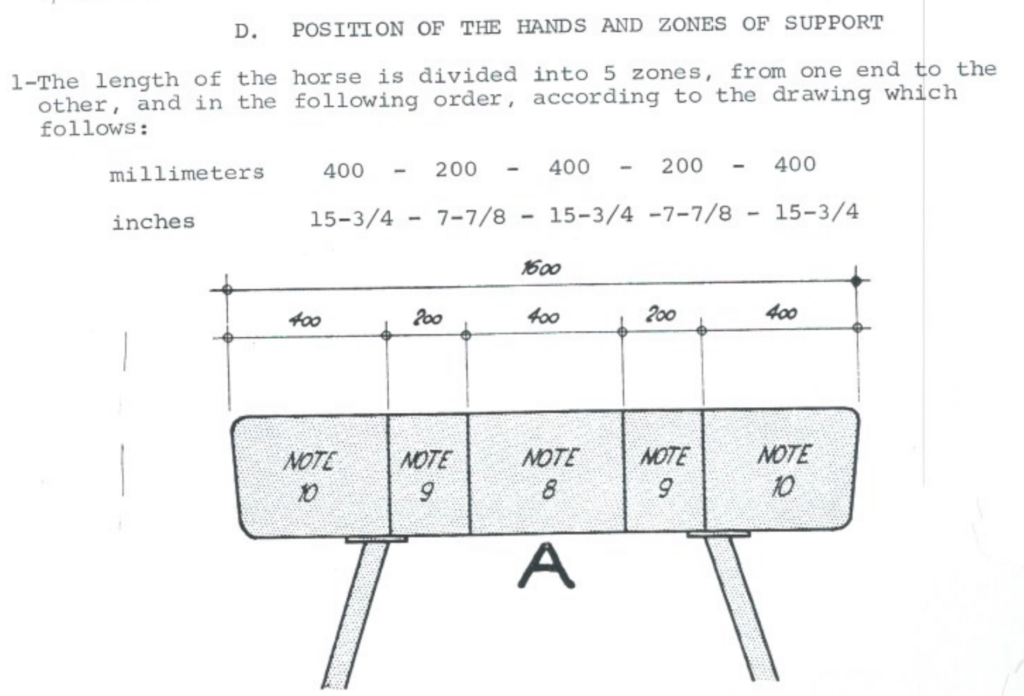
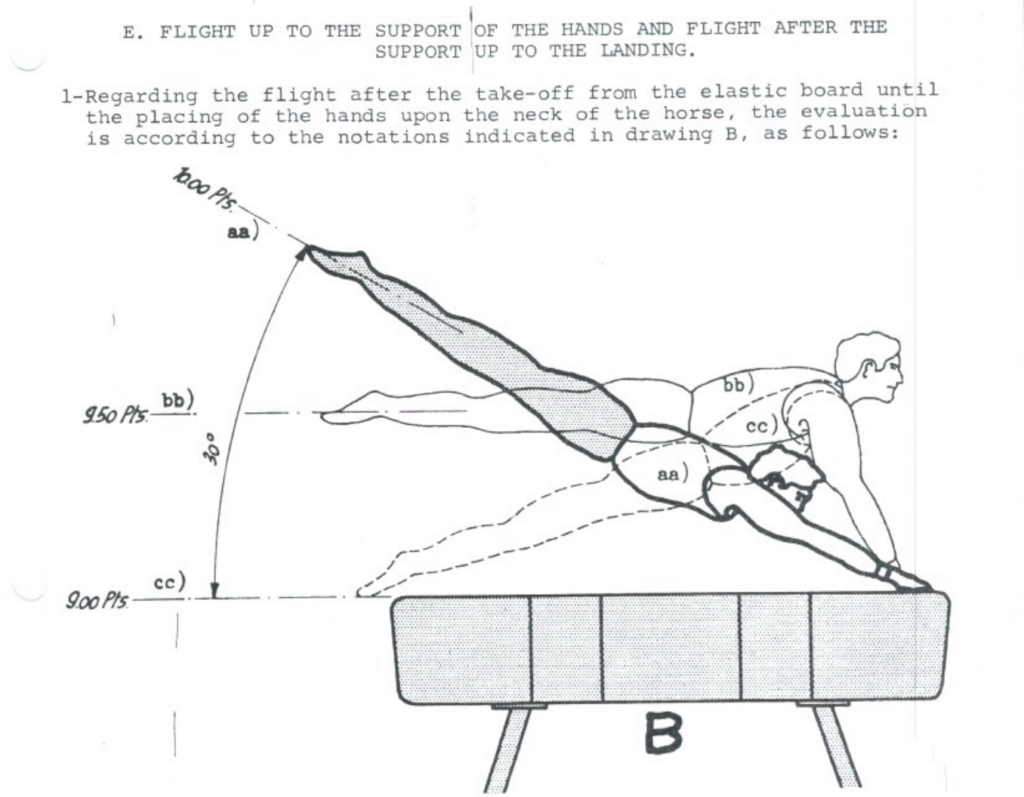
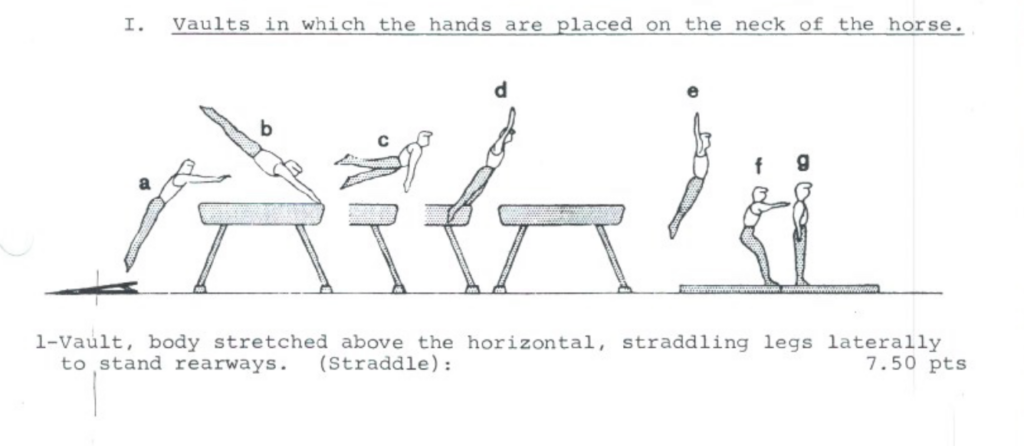
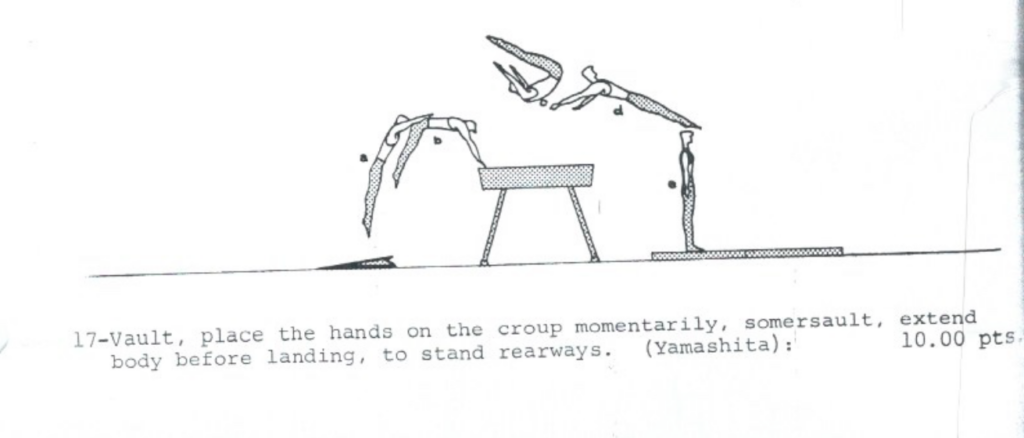
You can see the 1964 Women’s Code of Points here.
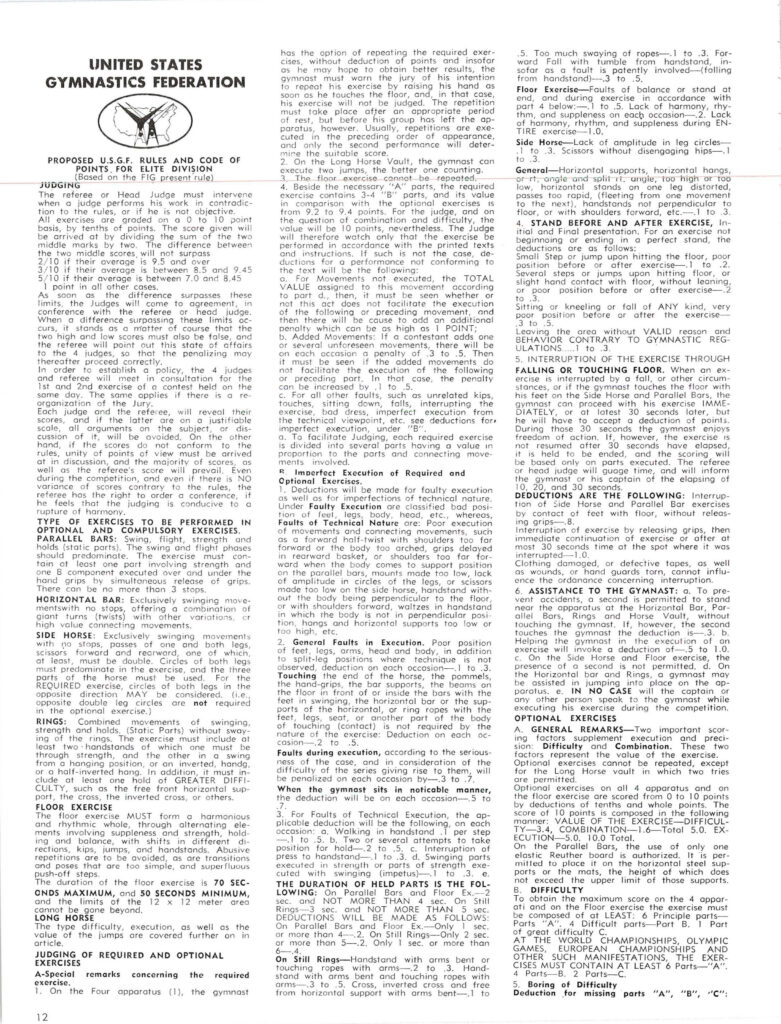
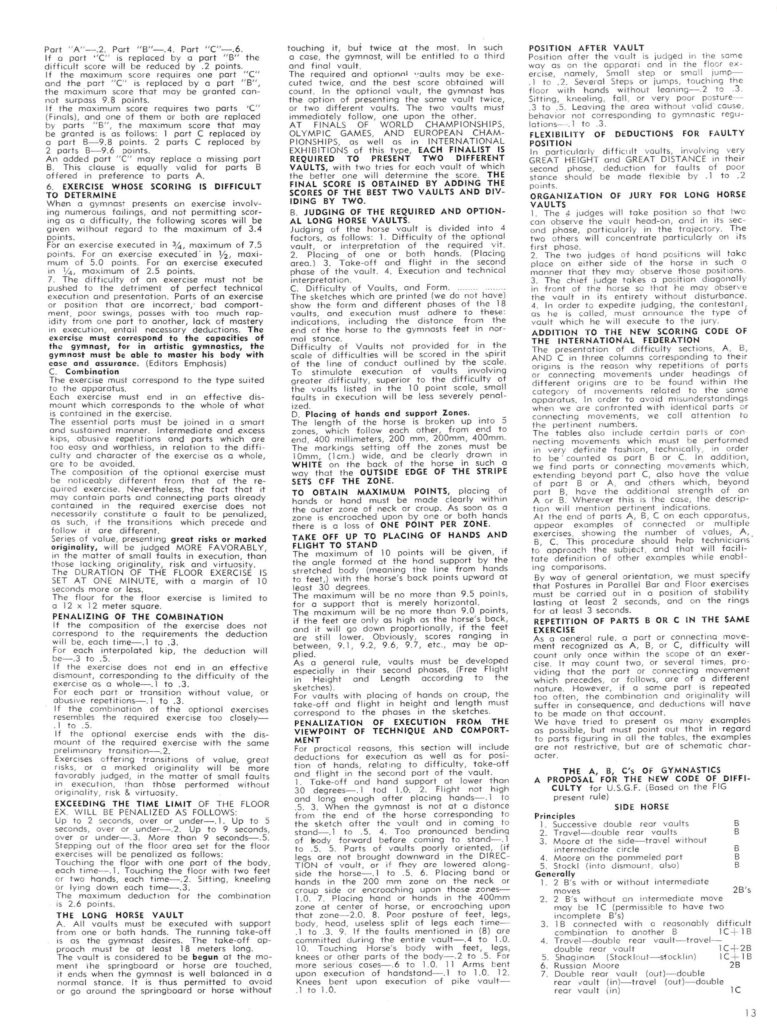
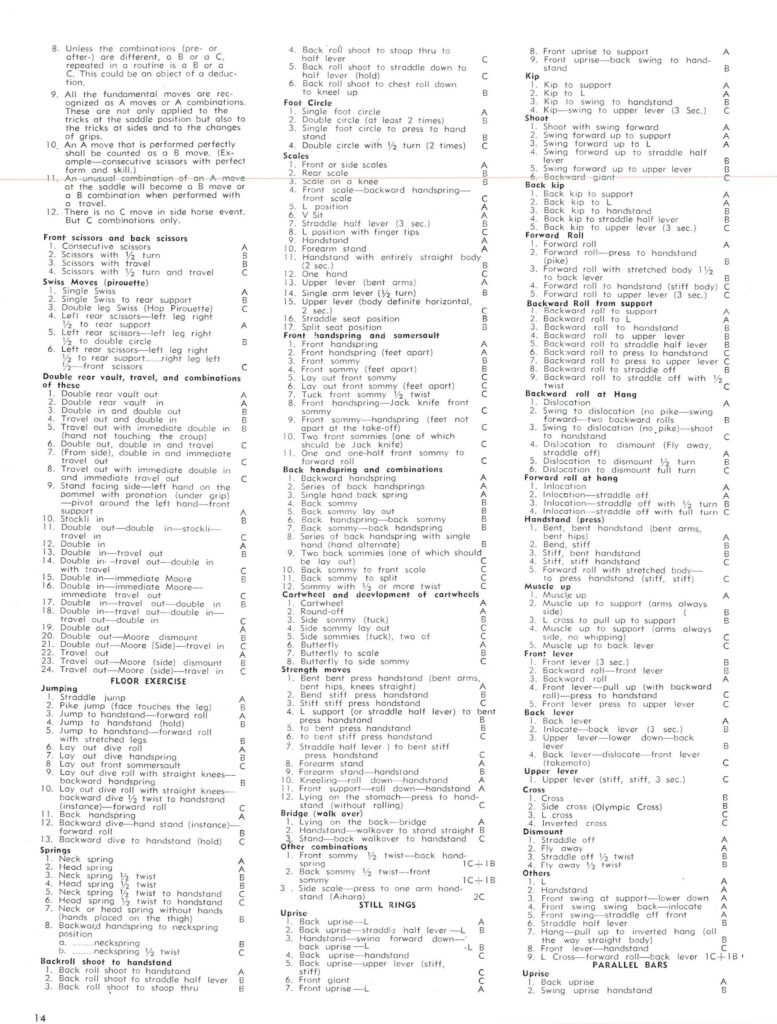
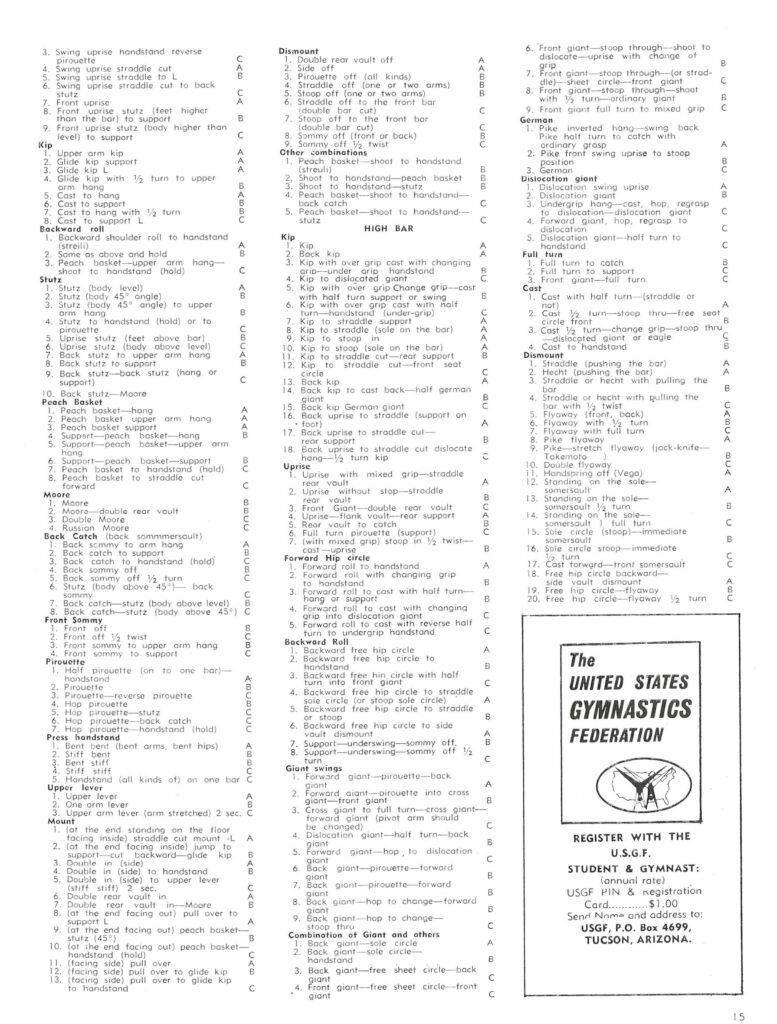
One reply on “1964: The Men’s Code of Points”
Super collection of the study material regarding Gymnastics Code and its history 👌